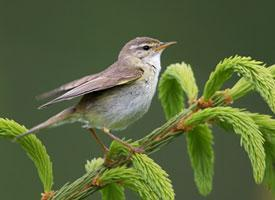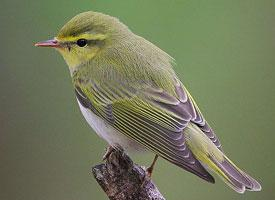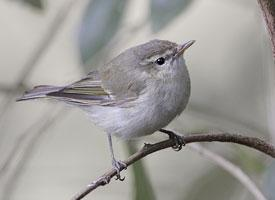
Poids et mesures
| Longueur | de 11 à 12,5 cm |
|---|---|
| Poids | de 7 à 15 g |
| Envergure des ailes | de 17 à 22 cm |
Données biologiques
| Durée de vie | 2 r |
|---|
Description de l'animal
The Willow Warbler, scientifically known as Phylloscopus trochilus, is a small, enchanting bird that graces the forests, woodlands, and gardens across Europe, Asia, and parts of Africa. This diminutive songbird, belonging to the leaf warbler family Phylloscopidae, is renowned for its melodious song and migratory habits, making it a subject of interest and admiration among birdwatchers and nature enthusiasts.Physically, the Willow Warbler presents a delicate appearance, with a body length typically ranging from 11 to 13 centimeters and a weight hovering around 7 to 15 grams. It possesses a slender build with a narrow tail and wings that are pointed, attributes that aid in its agility and prowess in flight. The plumage of the Willow Warbler is subtle yet beautiful, characterized by light olive-green upperparts and clean, pale underparts. Its face features a pale supercilium (eyebrow stripe) above its dark eye, which contrasts with its light cheek, adding a touch of elegance to its appearance. The bird's legs are a pale pinkish or brownish color, and its beak, finely pointed, is adept at catching insects, the primary component of its diet.
One of the most remarkable aspects of the Willow Warbler is its song. The bird's vocalizations are a true harbinger of spring, with a sweet, cascading melody that is both soothing and uplifting. The song consists of a series of descending notes, which have a liquid quality and can often be heard emanating from treetops during the breeding season. This melodious call plays a crucial role in territorial defense and in attracting mates.
The Willow Warbler is a migratory species, undertaking significant journeys between its breeding grounds in the northern parts of Europe and Asia and its wintering grounds in sub-Saharan Africa. This remarkable migration showcases the bird's endurance and navigational skills, as it crosses vast distances over deserts and seas twice a year. The bird's preference for breeding habitats includes open woodlands, forest edges, and scrub areas, where it constructs its nest on the ground, hidden among vegetation. The nest is a masterful creation, dome-shaped and made from grass, moss, and leaves, with a side entrance that leads to the inner chamber lined with feathers.
Breeding typically occurs from late April through July, during which the female lays a clutch of 5 to 7 eggs. These eggs are incubated primarily by the female for about 13 to 15 days until hatching. The chicks are altricial, meaning they are born blind and featherless, completely dependent on their parents for food and protection. Both parents are involved in feeding the young, which fledge approximately 12 to 15 days after hatching.
In terms of conservation status, the Willow Warbler is currently classified as Least Concern by the International Union for Conservation of Nature (IUCN), indicating that it is not at immediate risk of extinction. However, like many migratory bird species, it faces threats from habitat loss, climate change, and pollution. Conservation efforts aimed at preserving its habitats and mitigating these threats are crucial for ensuring the continued survival and prosperity of this delightful songbird.
In summary, the Willow Warbler (Phylloscopus trochilus) is a small, migratory bird known for its beautiful song and wide-ranging travels. Its presence enriches the ecosystems it inhabits and brings joy to those who have the privilege of witnessing its beauty and listening to its enchanting melodies.
Animaux similaires
Nouvelles photos d'animaux
Top 10 des animaux
- Dolphin gull (Leucophaeus scoresbii)
- Diana monkey (Cercopithecus diana)
- Moustached guenon (Cercopithecus cephus)
- Galápagos tortoise (Geochelone nigra complex)
- Japanese macaque (Macaca fuscata)
- Stone loach (Barbatula barbatula)
- Russian tortoise (Testudo horsfieldii)
- Greek tortoise (Testudo graeca)
- Common flying dragon (Draco volans)
- Vendace (Coregonus albula)


